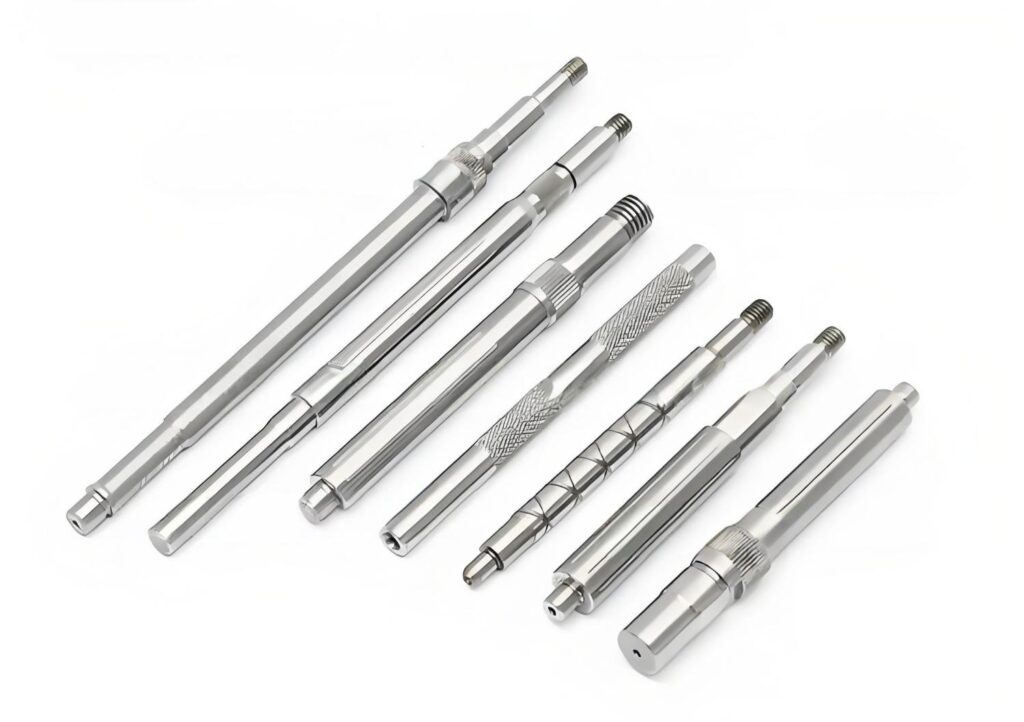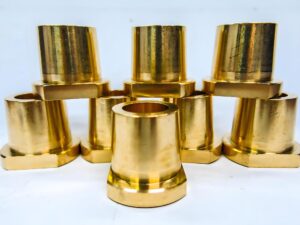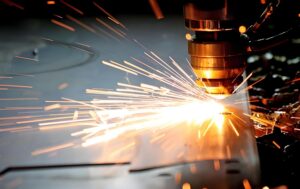What Is a Shaft?
A shaft is a rotating machine element, typically cylindrical, used to transmit power, torque, or motion between different parts of a system. Think of it as the backbone of a machine, connecting components like gears, pulleys, or bearings to ensure smooth operation. Shafts are designed to handle rotational forces, often under significant stress, making their design and material selection critical for durability and performance.
Shafts come in various shapes and sizes, from small, precise components in watches to massive shafts in industrial turbines. Their primary role is to transfer energy efficiently while maintaining structural integrity. For example, in a car, the driveshaft delivers power from the engine to the wheels, enabling movement. Without shafts, many mechanical systems would grind to a halt.
Types of Shafts
Shafts are not one-size-fits-all; they’re tailored to specific functions and industries. Below are some of the most common types of shafts used in mechanical engineering
Transmission Shafts

These shafts are primarily used to transmit power between different mechanical components. Common examples include:
- Line Shaft: Found in factories and workshops to distribute power from a single source to multiple machines.
- Counter Shaft: Placed between the driving shaft and the driven shaft, often seen in automotive gearboxes.
- Overhead Shaft: Mounted above machinery to provide power through belts or chains.
Machine Shafts
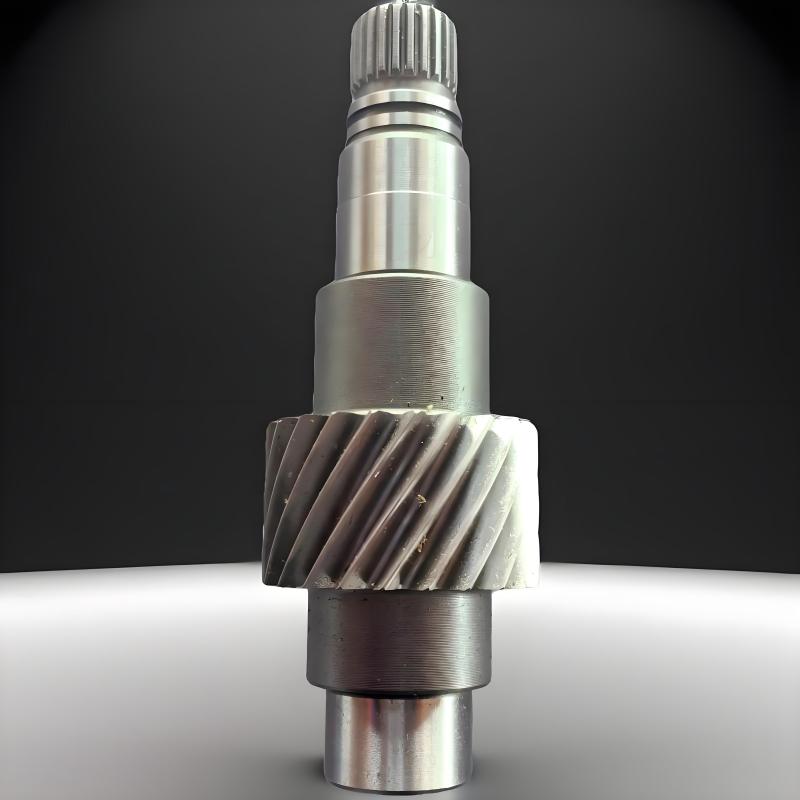
These are integral parts of specific machines. For example, the crankshaft in an engine is a type of machine shaft. These shafts are usually shorter and directly involved in converting energy forms within the machinery.
Axle Shafts
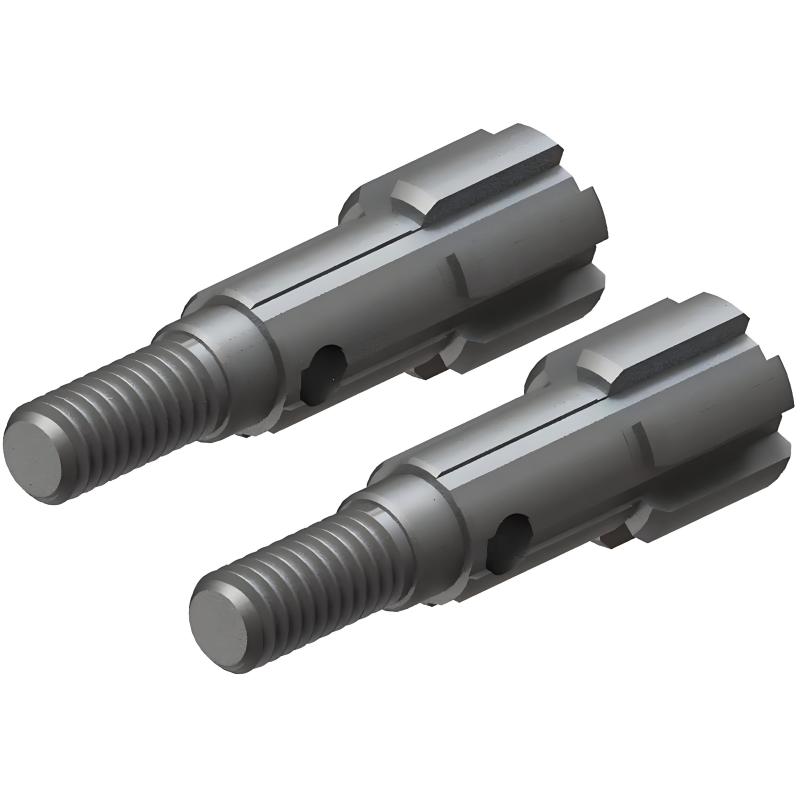
Though sometimes confused with shafts, axles differ slightly in functionality. Axles mainly support rotating elements like wheels but don’t always transmit torque. However, in some designs, like live axles in automobiles, they perform both functions.
Spindle Shafts
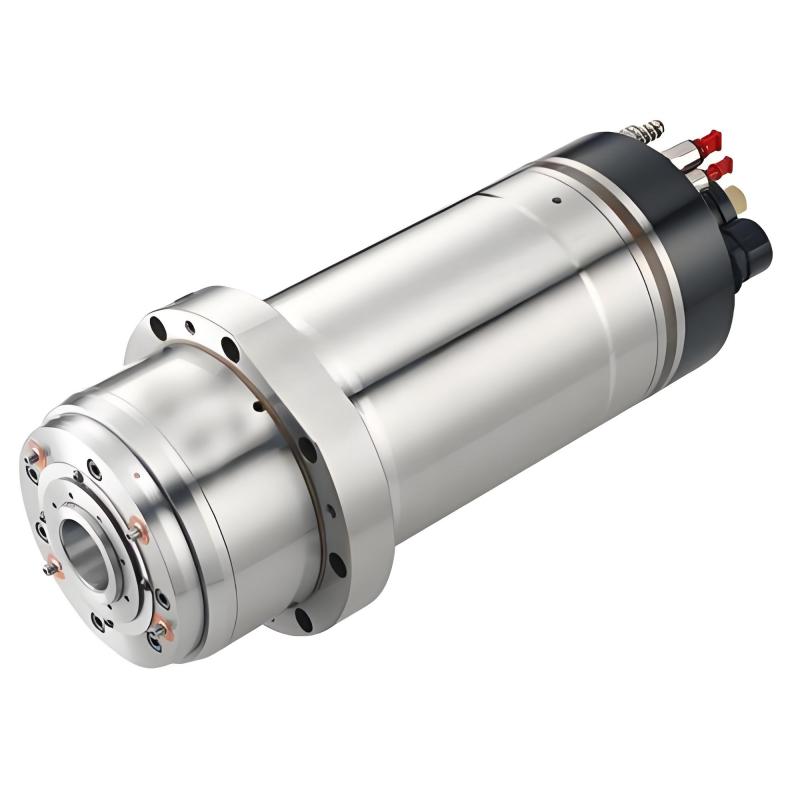
Spindles are slender shafts that rotate at high speeds. Commonly found in lathes, CNC machines, and drilling machines, spindles are critical in precision machining.
Flexible Shafts

These are used where standard rigid shafts can’t function efficiently, especially when the angle or position between two parts may vary. A flexible shaft transmits torque between components that aren’t in a straight line.
Each type of shaft is engineered for specific conditions, and the choice depends on the mechanical requirements, operational conditions, and desired performance outcomes.
Common Materials for Manufacturing Shafts
Choosing the right material is fundamental in shaft manufacturing. A shaft must possess high strength, good machinability, wear resistance, and cost-effectiveness. Below are some commonly used materials:
- Mild Steel
Mild steel is widely used due to its good machinability, availability, and cost-effectiveness. It is suitable for shafts subjected to moderate loads and speeds.
- Alloy Steel
For more demanding applications, alloy steels such as 40Cr or 42CrMo4 are preferred. These materials offer better mechanical properties, including toughness, tensile strength, and fatigue resistance.
- Stainless Steel
Used in environments where corrosion resistance is essential, such as food processing, marine, or chemical industries. Types like 304 and 316 stainless steel are common.
- Carbon Steel
Medium to high carbon steel provides higher hardness and strength, making it ideal for heavy-duty applications.
- Aluminum
Though not as strong as steel, aluminum is lightweight and corrosion-resistant. It is used in aerospace and automotive applications where weight reduction is crucial.
- Titanium
Known for its excellent strength-to-weight ratio and corrosion resistance, titanium is used in high-performance engineering applications but is more expensive and harder to machine.
Material selection also considers post-processing treatments such as heat treatment, surface hardening, or coating, which can enhance the mechanical properties and life span of the shaft.
Applications of Shafts in Industry
Shafts are ubiquitous in mechanical systems, playing a vital role in a wide range of industries. Their versatility makes them indispensable in both heavy-duty and precision applications. Here are some key areas where shafts shine:
- Automotive Industry
In vehicles, shafts like driveshafts and axles transmit power from the engine to the wheels. These components must be durable enough to handle constant stress while maintaining precise alignment to avoid vibrations.
- Industrial Machinery
From conveyor belts to heavy presses, industrial machinery relies on shafts to transfer power and support moving parts. These shafts are often large and engineered to handle significant loads over long periods.
- Aerospace
Aerospace applications demand shafts that are both lightweight and incredibly strong. Turbine shafts in jet engines, for example, must withstand extreme temperatures and rotational speeds while maintaining precision.
- Medical Devices
In medical equipment, such as surgical tools or imaging machines, shafts are often small but require exceptional precision. Flexible shafts are particularly useful in minimally invasive surgical tools, allowing for precise control in tight spaces.
- Renewable Energy
Wind turbines and hydroelectric generators use massive shafts to transfer rotational energy into electrical power. These shafts must be robust enough to operate continuously in outdoor environments.
The Importance of Precision in Shaft Manufacturing
Manufacturing a shaft is no small feat—it requires meticulous attention to detail to ensure performance and longevity. Precision is critical at every stage, from material selection to machining and finishing. Even a slight misalignment or surface imperfection can lead to vibrations, wear, or catastrophic failure in high-speed applications.
This is where advanced manufacturing techniques, such as turn-milling, come into play. Turn-milling, or mill-turn machining, combines the capabilities of turning and milling in a single setup, allowing for the creation of complex geometries with exceptional accuracy. For companies like Precionn, this technology offers significant advantages in producing high-quality shafts.
Precionn’s Expertise in Turn-Milling Shafts
Precionn specializes in turn milling, a process that enables the production of shafts with intricate features and tight tolerances. By integrating turning and milling operations, Precionn can manufacture shafts with complex profiles, such as those with keyways, splines, or varying diameters, in a single operation. This reduces production time, minimizes errors, and ensures consistent quality. Their state-of-the-art CNC machines and skilled engineers allow them to meet the exacting demands of industries like automotive, aerospace, and industrial machinery, delivering shafts that perform reliably under challenging conditions.
Design Considerations in Shaft Manufacturing
The engineering design of a shaft involves careful analysis and precision. Here are some of the primary considerations:
- Load Analysis
Shafts must be designed to withstand torsional and bending stresses, especially in dynamic applications. Engineers use simulation tools to analyze stress concentrations and deformation.
- Dimensional Accuracy
Maintaining tight tolerances is vital, especially for shafts interfacing with bearings, gears, or couplings. Even minor deviations can lead to vibrations or premature wear.
- Surface Finish
A smooth surface reduces friction and improves the lifespan of the shaft and its mating components. Processes such as grinding, polishing, or coating are often employed.
- Keyways and Grooves
Features like keyways, splines, or grooves enable torque transmission and alignment with other machine parts. These are carefully machined to exact standards.
- Balancing
High-speed shafts must be balanced to avoid vibrations and mechanical failures. Dynamic balancing is often conducted during final inspection.
- Heat Treatment
Processes such as carburizing, induction hardening, or nitriding can improve surface hardness and fatigue resistance.
Future Trends in Shaft Technology
As industries evolve, so do the demands on shafts. Emerging trends are shaping the future of shaft design and manufacturing:
- Lightweight Materials
With industries like aerospace and automotive prioritizing fuel efficiency, there’s a growing demand for lightweight shafts made from materials like titanium or composites. These materials reduce overall system weight without sacrificing strength.
- Smart Shafts
Advances in sensor technology are leading to the development of “smart” shafts equipped with embedded sensors to monitor stress, temperature, or vibrations in real-time. This can improve maintenance schedules and prevent failures.
- Sustainable Manufacturing
Sustainability is becoming a priority, with manufacturers exploring eco-friendly materials and processes to reduce waste and energy consumption in shaft production.
Why Choose Precionn for Your Shaft Manufacturing Needs
Precionn leverages state-of-the-art equipment and expert engineering to manufacture shafts that adhere to the highest standards. Whether the application is automotive, aerospace, industrial machinery, or energy, clients can trust Precionn to provide reliable, efficient, and cost-effective shaft solutions.
For businesses seeking a dependable partner in shaft manufacturing, Precionn offers not only technical excellence but also a customer-first approach that ensures successful outcomes

